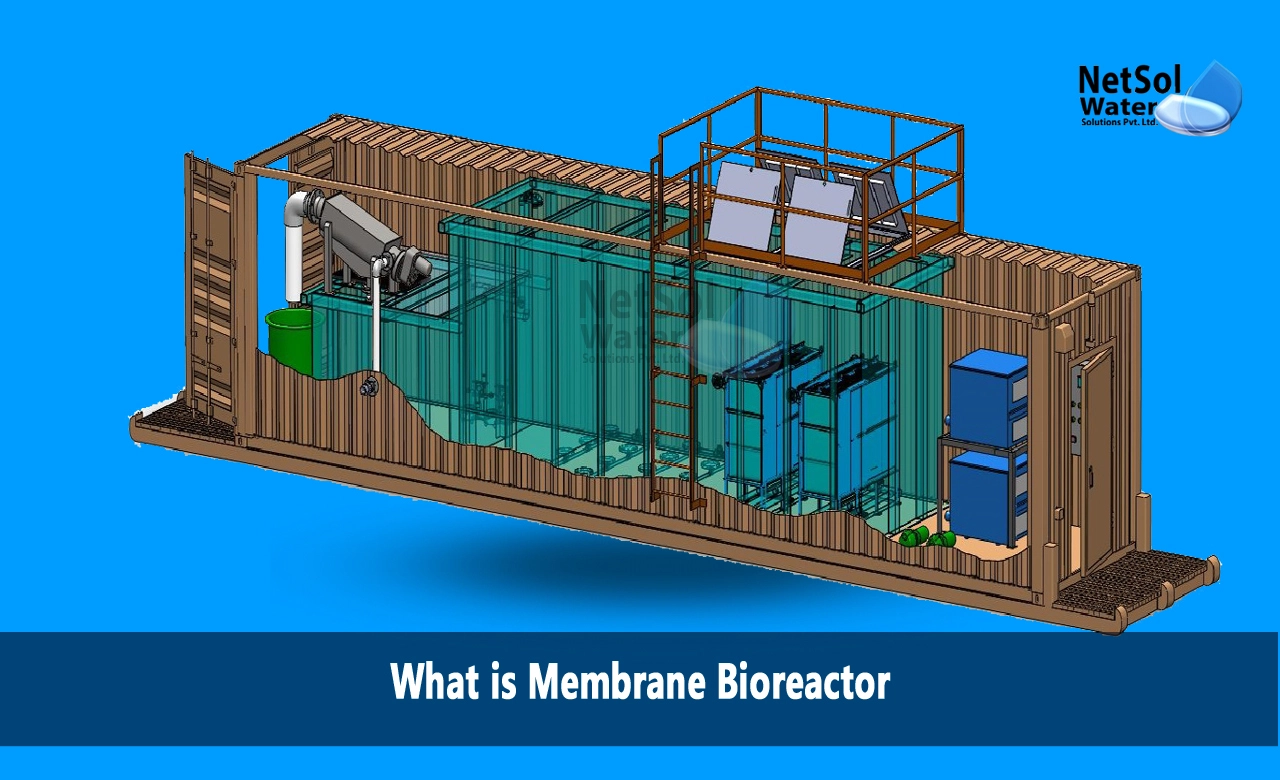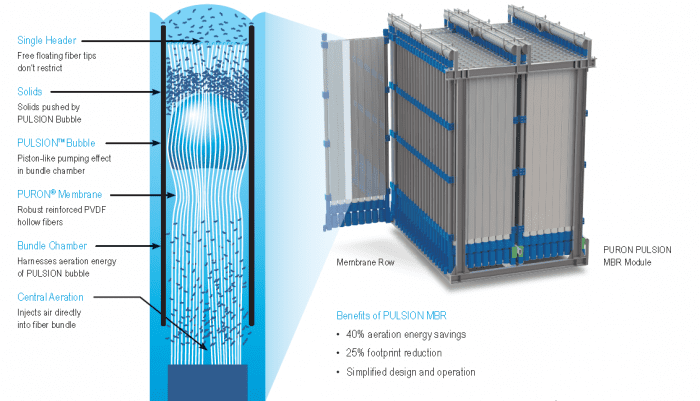The Economic Benefits of Installing a Membrane Bioreactor for Your Facility
The Economic Benefits of Installing a Membrane Bioreactor for Your Facility
Blog Article
The Advantages of Membrane Layer Bioreactors in Lasting Wastewater Management
Membrane layer bioreactors (MBRs) stand for an essential development in lasting wastewater administration, efficiently merging organic treatment with innovative membrane filtration modern technology. As the demand for sustainable solutions intensifies, discovering the diverse advantages of MBRs may reveal unanticipated implications for the future of wastewater therapy systems.
Summary of Membrane Layer Bioreactors
Membrane layer bioreactors (MBRs) stand for a considerable advancement in wastewater therapy technology, incorporating biological deterioration with membrane filtering to boost the effectiveness of the therapy process. This cutting-edge system combines the advantages of conventional triggered sludge procedures with membrane modern technology, permitting enhanced solid-liquid splitting up. MBRs utilize semi-permeable membrane layers to different treated water from biomass, causing high-quality effluent that can be recycled or safely discharged right into the environment.
The operational style of MBRs commonly involves a bioreactor where microbes damage down organic issue, adhered to by a membrane system that filterings system the combined liquor. This setup not just decreases the footprint of the treatment facility however additionally permits higher biomass concentrations and minimized hydraulic retention times. MBRs are capable of treating a bigger array of impurities, including pathogens and nutrients, making them appropriate for numerous applications, from municipal wastewater treatment to industrial effluent processing.
The integration of MBRs into wastewater administration systems is a sign of a growing trend towards sustainable and efficient practices in environmental design. Their capacity to generate high-quality effluent while minimizing space requirements placements MBR modern technology as a principal in modern-day wastewater therapy services.
Enhanced Effluent Quality

The membrane layer filtering process works as a physical obstacle, enabling the retention of microorganisms and particle matter, which adds to a more clear and cleaner effluent (Membrane Bioreactor). MBRs run at higher biomass focus than standard triggered sludge systems, promoting a lot more efficient biodegradation of toxins. This causes a reduction in biochemical oxygen demand (BOD) and overall suspended solids (TSS) levels in the last effluent
Furthermore, MBRs show outstanding efficiency in treating tough wastewater compositions, such as commercial effluents and wastewater with high nutrient loads. As an outcome, the effluent generated is commonly of higher top quality, enabling even more flexible disposal alternatives and reduced ecological impact. Eventually, the enhanced effluent quality accomplished via MBR innovation emphasizes its crucial function ahead of time sustainable wastewater administration techniques.
Water Reuse Opportunities
The top quality effluent created by membrane layer bioreactors (MBRs) opens up significant chances for water reuse in numerous applications. MBRs effectively eliminate pollutants, consisting of pathogens, suspended solids, and raw material, leading to cured water that fulfills or exceeds regulatory requirements for reuse. This high quality permits the execution of water recycling initiatives across diverse industries.
One famous application remains in farming, where dealt with wastewater can be made use of for watering, advertising lasting farming techniques while preserving fresh water resources. In addition, MBR-treated effluent can be utilized for commercial procedures such as air conditioning, cleansing, and as a procedure water resource, dramatically his response reducing the demand for potable water in these operations.
In urban environments, MBRs facilitate the use of reclaimed water for landscape irrigation, commode flushing, and various other non-potable usages, adding to the general durability of water system systems. The integration of MBR modern technology in decentralized systems help in handling localized water demands, specifically in water-scarce areas.
Decreased Environmental Influence
Exactly how can the adoption of membrane layer bioreactors (MBRs) add to a decreased ecological effect in wastewater monitoring? MBRs considerably boost the treatment performance of wastewater while minimizing ecological disturbances. Membrane Bioreactor.
In addition, MBRs operate at reduced hydraulic retention times contrasted to conventional systems, causing smaller treatment plant impacts. This portable design minimizes land usage, thus protecting all-natural habitats and biodiversity. The process likewise creates i thought about this less sludge than conventional approaches, mitigating disposal difficulties and reducing greenhouse gas exhausts associated with sludge administration.
Furthermore, MBRs assist in the recuperation of valuable resources, such as water and nutrients, contributing to a round economic situation. By enabling water reuse for irrigation or industrial processes, MBRs assist relieve freshwater deficiency, thus promoting sustainable water use techniques. Inevitably, the fostering of MBR modern technology represents a significant stride towards reducing the environmental effect of wastewater administration systems.
Financial Advantages of MBRs

Furthermore, MBRs assist in the manufacturing of high-quality effluent, which can be reused for numerous applications, such as agricultural irrigation and commercial processes - Membrane Bioreactor. This reuse capacity can considerably reduce water procurement costs, offering a financial incentive for sectors encountering rigorous water guidelines
The small design of MBR systems additionally leads to decreased land requirements, which is specifically beneficial in city areas where real estate is expensive. By lessening space, towns and sectors can reduce land acquisition and upkeep expenditures.
Moreover, MBRs typically require much less regular upkeep and have a longer life expectancy than standard systems, additionally adding to cost financial savings. In recap, the financial advantages of MBRs-- varying from decreased functional expenses to land financial savings and effluent reuse-- make them an engaging choice for lasting wastewater management, providing both long-lasting and immediate economic advantages.
Final Thought
In addition, MBRs add to minimized ecological influences through small designs and lower sludge generation. Economic benefits further boost their feasibility, making MBRs check a promising remedy for addressing the obstacles of wastewater treatment and promoting lasting resource monitoring.
Membrane layer bioreactors (MBRs) represent a pivotal improvement in lasting wastewater administration, properly merging organic treatment with innovative membrane layer purification technology.Membrane bioreactors (MBRs) represent a substantial development in wastewater therapy modern technology, integrating organic deterioration with membrane purification to enhance the effectiveness of the therapy procedure.Accomplishing boosted effluent top quality is one of the most substantial advantages of utilizing membrane layer bioreactors (MBRs) in wastewater treatment.In addition, MBRs show outstanding performance in dealing with tough wastewater structures, such as industrial effluents and wastewater with high nutrient loads.Integrating membrane layer bioreactors (MBRs) into wastewater management not only reduces ecological effect however likewise presents significant financial advantages.
Report this page